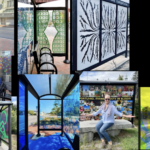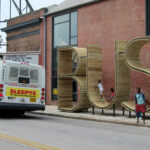Western Avenue Station of the Green Line, located in Little Mekong—a district in the Summit-University and Frogtown neighborhoods of Saint Paul with a high Asian-American population—developed a market following the construction of the station to strengthen community identity, and attract new foot traffic for local vendors and businesses.
The challenge
Originally, the Green Line light rail which connects Minneapolis and Saint Paul in Minnesota was planned with large service gaps in areas where the largest populations of low-income people and people of color lived to try and satisfy arcane federal cost-effectiveness standards that incentivize adding limited stops and/or stops only in locations with the highest ridership potential while ignoring the potential benefits of stops in neighborhoods that perhaps have fewer riders but greater need of new transit options. The community organized and through an intensive organizing campaign was able to get three stations added to the corridor. One of those stops ended up becoming the Western Avenue Station located in Little Mekong, a district in the Summit-University and Frogtown neighborhoods with a high Asian-American population.
As community members and business leaders became involved in conversations about the future of the area, they saw the new light rail station as an opportunity to strengthen community identity and attract new foot traffic.
The project
Inspired by markets in Southeast Asia, local business owners sought to capitalize on the new light rail station and develop their own market following the construction of the station. The Asian Economic Development Association designed the market to attract visitors and provide small business owners and individual entrepreneurs who may not have shop space to market their products. People from across the Twin Cities have visited the markets to purchase local wares and enjoy art exhibits, dancers, musicians, and puppets, bringing positive attention to a neighborhood that was hungry for it.


The results
The market has provided a focal home for the Southeast Asian community, and an opportunity for residents of all ethnicities to interact. It has attracted a diverse audience from across the Twin Cities, and given many artists the chance to showcase their work. The events also have brought positive attention to a neighborhood that was hungry for it, while providing space and customers to small businesses and vendors.
Lessons learned:
- Station area branding, when it is led by local businesses and community groups, is a successful strategy to draw attention and foot traffic.
- Small projects, like the Irrigate creative placemaking grants, can build capacity for local groups to take charge of their own futures, like building relationships that will serve as the groundwork for future collaborations.
- Events can be a catalyst. In Little Mekong, the market has drawn attention to the station area, and once people attend the market, they are more likely to return.
Today, the Little Mekong Business and Cultural District works to “maintain [the district’s] cultural vibrancy by preserving cultural and preventing further gentrification through creative placemaking, community engagement and supporting local businesses along the corridor.” Learn more about the District.
Key Partners: Asian Economic Development Association, Little Mekong Business and Cultural District















